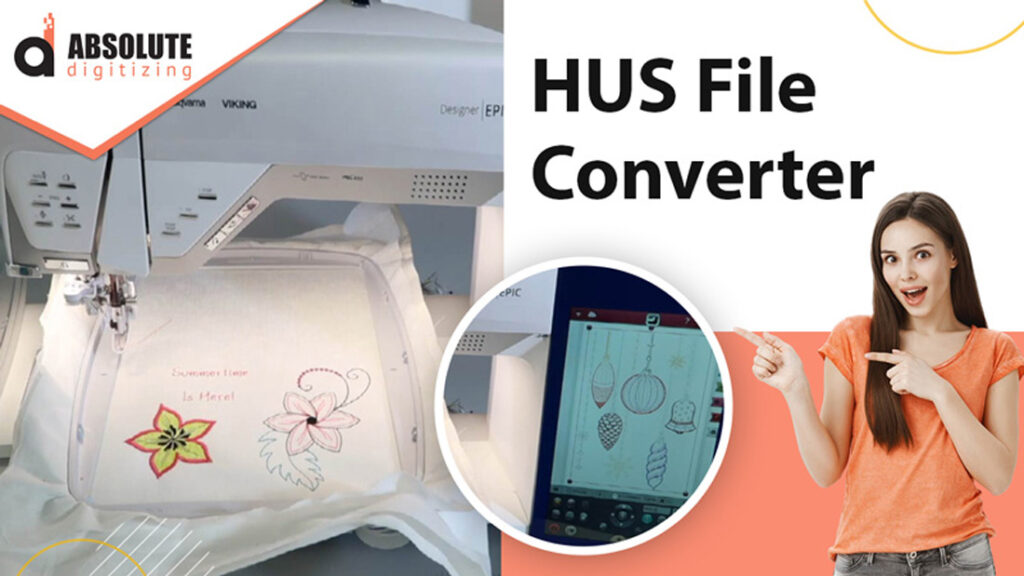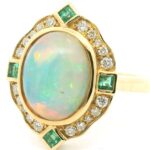Introduction
Transforming a favorite photo or logo into a beautifully embroidered design is a rewarding way to personalize apparel, gifts, or merchandise. For Husqvarna Viking embroidery machine owners, the HUS file format is the key to achieving professional-quality results. Converting a JPG to a HUS file may sound daunting, but with the right tools and steps, you can create stitch-ready designs like a pro. Whether you’re branding a business or crafting a unique gift, this guide walks you through the process with clear, practical steps to ensure your embroidery stands out. Let’s dive into how to convert JPG to HUS file with professional precision.
Understanding JPG and HUS Formats
A JPG is a raster image format made of pixels, ideal for photos but limited in scalability. When enlarged, JPGs can become pixelated, making them less suitable for embroidery. A HUS file, used by Husqvarna Viking machines, is a vector-based embroidery format that contains instructions for stitches, colors, and patterns. Converting a JPG to HUS involves turning a pixel-based image into a stitch map that your machine can follow. This process requires digitizing software to translate the image into precise embroidery instructions, ensuring a clean and professional result.
Why Convert JPG to HUS?
Converting a JPG to a HUS file unlocks the ability to embroider high-quality designs with your Husqvarna Viking machine. HUS files ensure your design scales perfectly without losing clarity, whether it’s a small logo on a shirt or a large pattern on a blanket. This format is tailored for Husqvarna machines, guaranteeing compatibility and smooth stitching. For businesses, a HUS file ensures consistent branding on uniforms or merchandise. For hobbyists, it allows creative freedom to embroider photos or artwork, making projects like custom gifts or home decor achievable.
Step 1: Select a Suitable JPG Image
Start with a high-quality JPG image (at least 300 DPI) that’s embroidery-friendly. Choose designs with clear, bold shapes and high contrast, as these translate best into stitches. Simple logos, icons, or cartoon-style images work better than complex photos with gradients or tiny details. For example, a JPG of a flower with distinct petals will embroider cleaner than a blurry landscape. If your image is too intricate, use photo editing software like Photoshop or GIMP to simplify colors or sharpen outlines before converting.
Step 2: Choose Digitizing Software
To convert a JPG to a HUS file, you need embroidery digitizing software with HUS export capabilities. Popular options include Husqvarna Viking 6D or 5D (proprietary software), SewArt, Wilcom Hatch, or Ink/Stitch (a free, open-source tool). SewArt and Ink/Stitch are great for beginners due to their affordability and ease of use, while Wilcom Hatch offers advanced features for professionals. Ensure the software supports HUS as an output format, as this is critical for compatibility with your Husqvarna Viking machine.
Step 3: Import and Resize the Image
Open your digitizing software and import the JPG file. Most programs allow you to drag and drop or use an “Import” option. Once loaded, resize the image to match the dimensions you want for the embroidered design, typically 2–6 inches for apparel or accessories. Use the software’s resize tool to maintain proportions. If the image has a cluttered background, crop it to focus on the main subject, like a logo or pet portrait, to streamline the digitizing process. Proper sizing ensures the design fits your project and hoop.
Step 4: Simplify the Image for Embroidery
Embroidery machines can’t replicate the full complexity of a JPG, so simplify the image using the software’s auto-digitizing tools. Convert the image to a posterized version with 5–10 color blocks to reduce complexity. In SewArt or Ink/Stitch, adjust settings like color count or brightness to create distinct shapes. For example, a photo of a dog might be simplified into bold color blocks for the fur and eyes. Preview the simplified image to ensure it retains the original’s essence while being suitable for stitching.
Step 5: Assign Stitch Types and Directions
Define how your Husqvarna Viking machine will stitch the design by assigning stitch types to different areas. Use satin stitches for thin lines or borders, fill stitches for larger areas, and running stitches for fine details. For instance, a logo’s outline might use satin stitches for a glossy finish, while a solid shape uses fill stitches for coverage. Set the stitch direction to follow the design’s natural flow, like the curve of a letter, to enhance texture and prevent fabric distortion. Adjust these settings manually or use the software’s auto-digitizing suggestions.
Step 6: Map Thread Colors and Sequence
HUS files require a clear color sequence, as embroidery machines stitch one color at a time. In the software, select thread colors from a chart (e.g., Isacord or Madeira) that match your image’s palette. For a logo with red and blue elements, choose matching shades and group similar colors to minimize thread changes. For example, stitch all red areas before switching to blue. This step improves efficiency and ensures a cohesive look. Save your progress frequently to avoid losing work during the conversion process.
Step 7: Fine-Tune Stitch Settings
Achieve professional results by adjusting stitch settings like density and underlay. Stitch density determines how closely stitches are packed—too dense, and the fabric may pucker; too sparse, and gaps may appear. Lighter fabrics like cotton need lower density, while thicker materials like towels can handle more stitches. Add an underlay, a base layer of stitches, to stabilize the design, especially on stretchy fabrics. Use the software’s preview mode to simulate stitching and check for issues like uneven lines or overlapping stitches, making tweaks as needed.
Step 8: Export the HUS File
Once satisfied with the design, export it as a HUS file. In most software, go to “File” > “Save As” or “Export” and select HUS from the format list. Verify that the file is compatible with your Husqvarna Viking machine, as some models may have specific requirements. Save the file to a USB drive or transfer it directly to your machine, depending on its setup. Before exporting, review the stitch count, colors, and design size. A high stitch count can slow down embroidery, so simplify the design if necessary.
Step 9: Test the Design
Before embroidering on your final fabric, conduct a test stitch-out on a scrap piece of similar material. Load the HUS file into your machine, set up the correct thread colors, and start stitching. Inspect the result for issues like thread breaks, puckering, or colors that don’t match the JPG. If the design needs adjustments, return to the software to refine stitch types, density, or colors. For example, if small details look blurry, try a thinner satin stitch. Testing ensures the final product meets professional standards.
Step 10: Embroider the Final Product
With a successful test stitch-out, you’re ready to embroider the final piece. Choose your fabric or item, such as a shirt, bag, or towel, and secure it in the embroidery hoop. Load the HUS file, check settings like needle type and thread tension, and begin embroidering. Monitor the process to catch issues like thread tangles. Once complete, remove the fabric, trim excess threads, and iron or steam the design to set it. Your JPG is now a professionally embroidered masterpiece!
Conclusion
Converting a JPG to a HUS file like a professional is achievable with the right tools and steps. From selecting an embroidery-friendly image to fine-tuning stitch settings, each step ensures your design looks crisp and vibrant on fabric. Whether you’re branding merchandise or creating personalized gifts, this process delivers high-quality results tailored to your Husqvarna Viking machine. With practice and attention to detail, you can master the art of digitizing and produce stunning embroidered designs. Follow these steps to convert JPG to HUS file and elevate your embroidery projects with professional flair.


